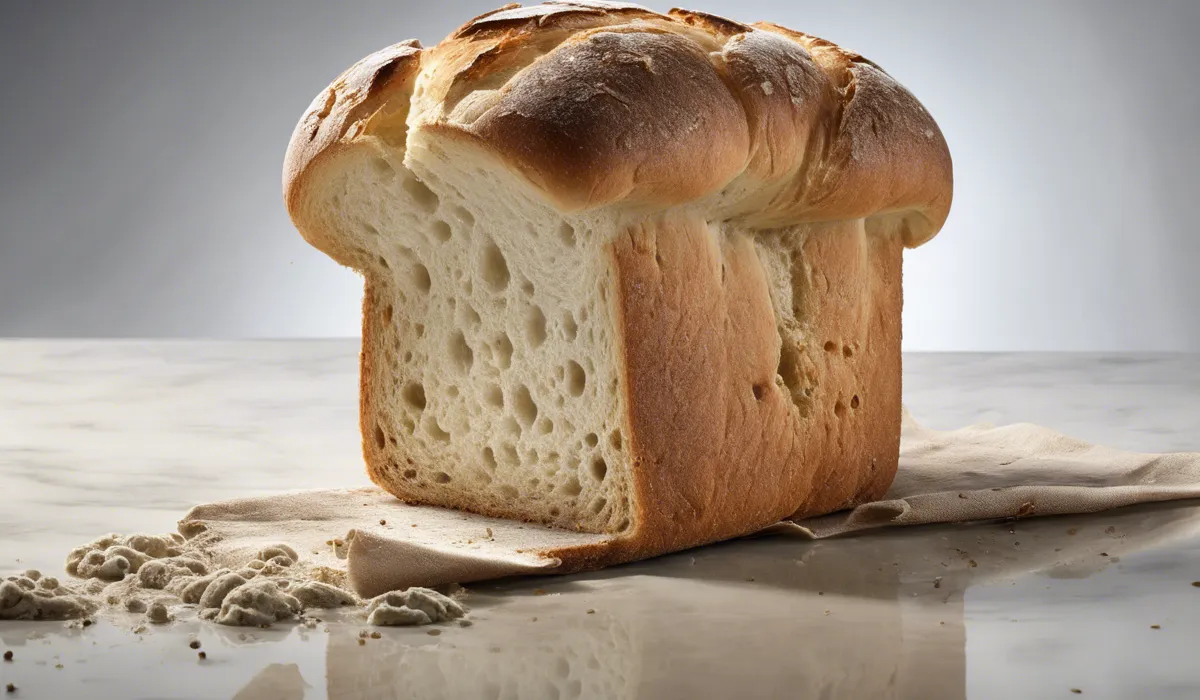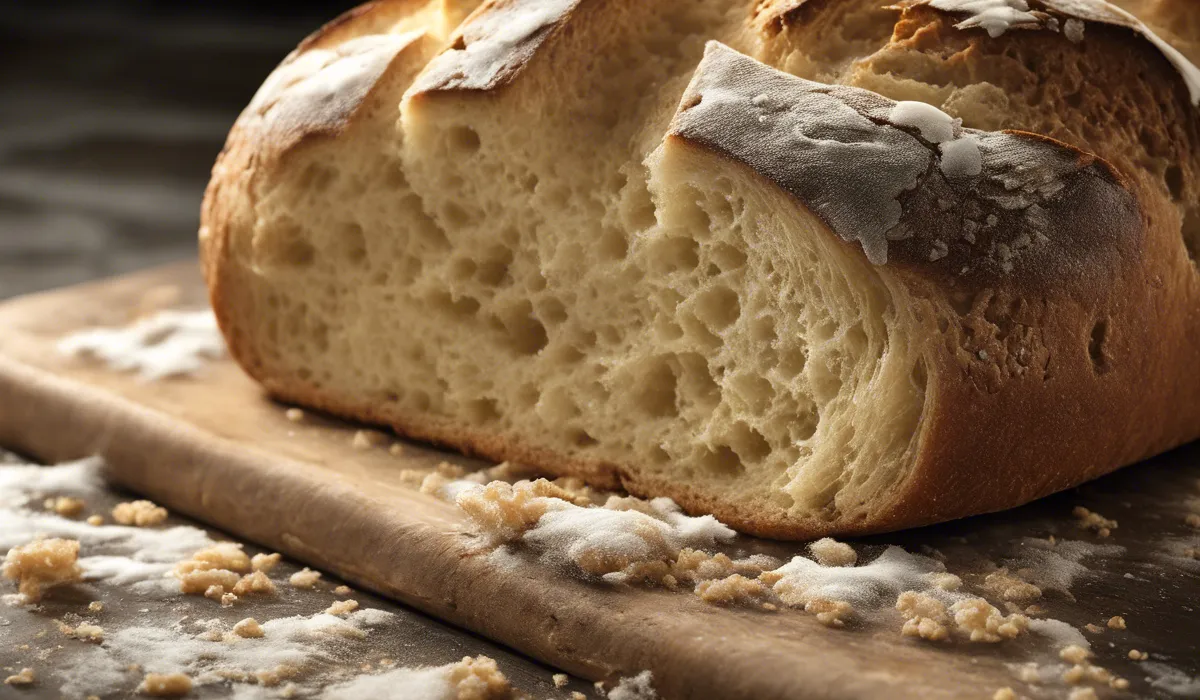Mold grows on bread when spores land on its surface and find warm, moist conditions. The bread’s nutrients feed the mold, allowing it to multiply and spread rapidly. Bread mold requires oxygen, so it thrives in exposed environments.
Science of Mold Growth on Bread

Mold Defined as a Fungus
Mold is a type of fungus that can grow almost anywhere. Just like mushrooms, mold forms part of a large family of living things that are neither plants nor animals.
These tiny organisms live on plant and animal matter. Molds are important in nature because they help break down dead materials. However, when mold grows on food like bread, it can be a problem.
Common Bread Molds
On bread, you might find different types of mold. Some of the most common are Rhizopus stolonifer, which is often called black bread mold, Penicillium, which can appear blue or green, and Aspergillus, which might look like a dusty white or yellow patch.
Each of these has a unique look and can affect the bread in different ways.
Mold Spores Around Us
Mold spores are tiny, and they are everywhere around us. They are in the air we breathe and sometimes on the things we touch.
Usually, these spores do not cause problems. But if they land on something tasty like bread and have the right conditions, they can start to grow.
Conditions Favoring Mold
Mold loves warm, moist places. Bread often provides the perfect home because it is full of nutrients and often stored in places like kitchens, where the temperature and humidity can help mold grow. A little bit of moisture is all it takes for mold to start multiplying.
Bread’s Ingredients and Mold
The ingredients in bread, such as flour, water, and sometimes sugar, are great food for mold.
They help mold grow quickly. This is why bread can become moldy if we do not eat it fast enough or keep it in a place where mold can’t grow easily.
Stages of Mold Growth on Bread

Initial Contamination and Colonization
When mold spores land on bread, they start to set up their home. This is called contamination.
After the spores settle, they begin to colonize the bread by sending out tiny threads called hyphae. These threads start to grow into the bread, breaking down the bread’s surface to feed the mold.
Hyphal Growth and Mycelium Formation
As the mold’s hyphae grow, they form a network. This network is called a mycelium. It is like the roots of a plant, spreading through the bread to soak up nutrients.
The mycelium might not be visible to the naked eye at first, but it is a clear sign that the mold is taking hold and expanding its territory.
Spore Generation and Spread
Once the mold has enough food and space, it starts to make more spores. These spores can then travel to other parts of the bread or even to other foods nearby. The cycle of growth continues as these new spores find places to grow.
Visible Signs of Mold Growth
After some time, you can see the mold on the bread. It might look fuzzy and have different colors.
This is the mold growing above the surface of the bread. When you see these signs, the mold has already made a lot of progress.
Rate of Growth and Influencing Factors
The speed at which mold grows on bread can vary. It depends on things like the temperature, how moist the air is, and what kind of bread it is.
Some breads with preservatives might mold slower, while homemade or organic breads without these chemicals might mold faster.
Preventing and Managing Mold on Bread

Storage Practices
Keeping bread in a dry, cool place can help prevent mold. Some people put bread in the fridge or even the freezer to make it last longer.
It’s also a good idea to keep bread in an airtight container or bag to keep out moisture and mold spores.
Role of Preservatives
Many breads you buy at the store have preservatives. These chemicals help stop mold from growing.
They can make bread last longer on the shelf and at home. However, some people prefer bread without preservatives for health reasons.
Bread Types and Mold Susceptibility
Different kinds of bread can mold at different rates. Bread with more natural ingredients and no preservatives might get moldy quicker.
Breads that are very dry or made with certain ingredients that mold doesn’t like might last longer.
Handling Moldy Bread
If you see mold on bread, it’s best not to eat it. Mold can produce toxins that are not safe. When you throw away moldy bread, put it in a bag so the spores do not spread. Make sure to clean the area where the bread was stored to remove any remaining spores.
When to Discard Bread?
It’s important to throw away bread as soon as you see mold. Some molds can make you sick, especially if you have allergies or a weak immune system.
It’s not enough to cut off the moldy part because the spores can spread to parts of the bread that still look okay.
FAQs About Bread Mold Growth
What conditions are needed for mold to grow on bread?
Mold grows on bread when it is exposed to warm, moist conditions which are ideal for mold spores to land, germinate, and thrive.
How does mold feed on bread?
The mold uses the nutrients in bread as a food source, allowing it to multiply and spread across the bread’s surface.
Can mold grow on bread in an airtight container?
Mold can grow in an airtight container if mold spores are already present on the bread before it is sealed, but growth may be slower due to reduced oxygen.
How quickly can mold spread on bread?
Mold can spread rapidly on bread, often becoming visible within a few days under suitable conditions.
Is mold on bread always visible to the naked eye?
Initially, mold may not be visible, but as it multiplies, it typically becomes visible as fuzzy spots of various colors.
Final Thoughts
Mold takes root on bread when its spores land on a hospitable surface, rich in nutrients and moisture.
These conditions, along with a supply of oxygen, are ideal for mold to flourish. Consequently, bread left exposed to air in a warm, moist environment becomes a breeding ground for mold to rapidly grow and proliferate.
